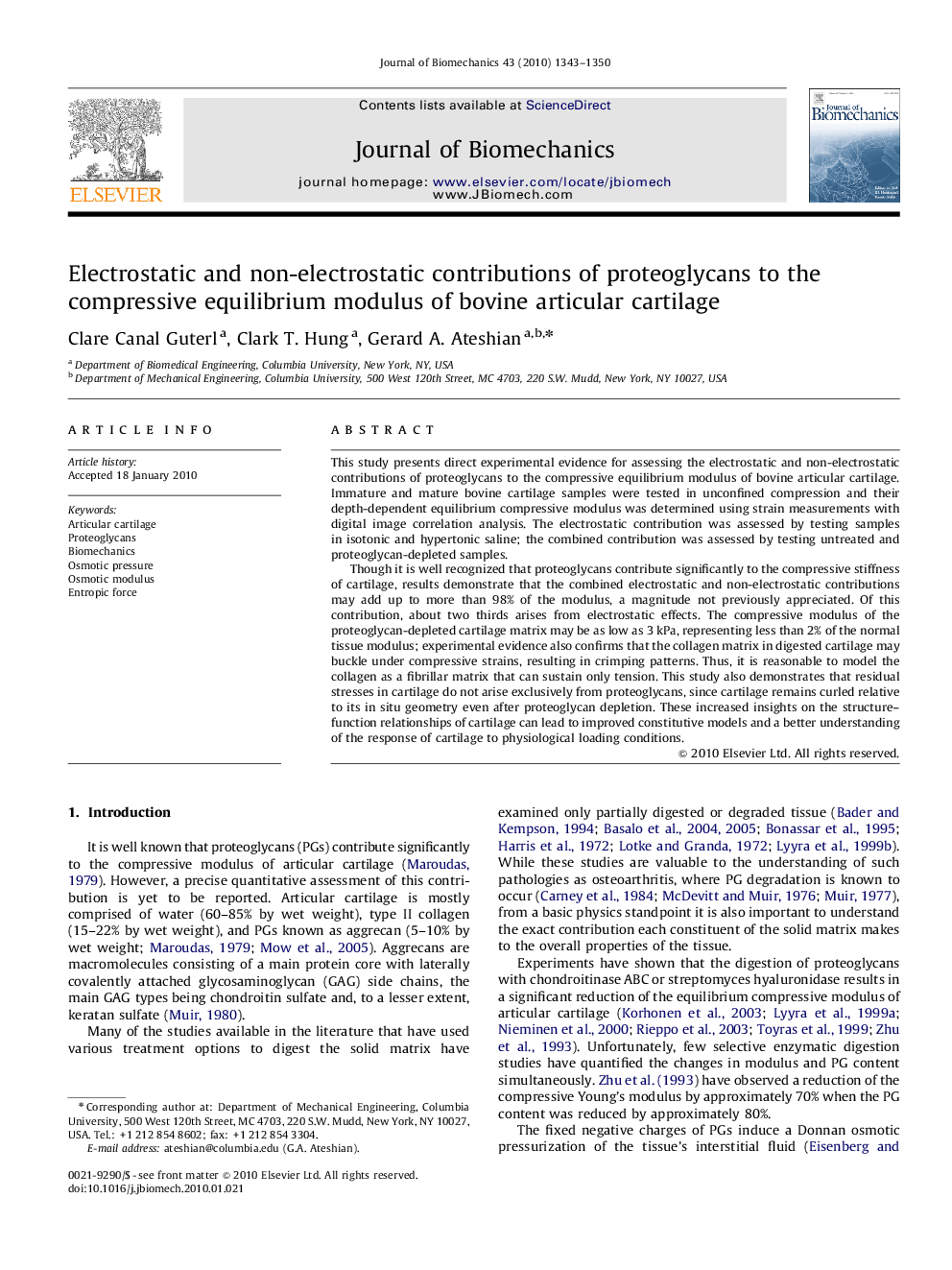| کد مقاله | کد نشریه | سال انتشار | مقاله انگلیسی | نسخه تمام متن |
|---|---|---|---|---|
| 873666 | 910314 | 2010 | 8 صفحه PDF | دانلود رایگان |

This study presents direct experimental evidence for assessing the electrostatic and non-electrostatic contributions of proteoglycans to the compressive equilibrium modulus of bovine articular cartilage. Immature and mature bovine cartilage samples were tested in unconfined compression and their depth-dependent equilibrium compressive modulus was determined using strain measurements with digital image correlation analysis. The electrostatic contribution was assessed by testing samples in isotonic and hypertonic saline; the combined contribution was assessed by testing untreated and proteoglycan-depleted samples.Though it is well recognized that proteoglycans contribute significantly to the compressive stiffness of cartilage, results demonstrate that the combined electrostatic and non-electrostatic contributions may add up to more than 98% of the modulus, a magnitude not previously appreciated. Of this contribution, about two thirds arises from electrostatic effects. The compressive modulus of the proteoglycan-depleted cartilage matrix may be as low as 3 kPa, representing less than 2% of the normal tissue modulus; experimental evidence also confirms that the collagen matrix in digested cartilage may buckle under compressive strains, resulting in crimping patterns. Thus, it is reasonable to model the collagen as a fibrillar matrix that can sustain only tension. This study also demonstrates that residual stresses in cartilage do not arise exclusively from proteoglycans, since cartilage remains curled relative to its in situ geometry even after proteoglycan depletion. These increased insights on the structure–function relationships of cartilage can lead to improved constitutive models and a better understanding of the response of cartilage to physiological loading conditions.
Journal: Journal of Biomechanics - Volume 43, Issue 7, 7 May 2010, Pages 1343–1350